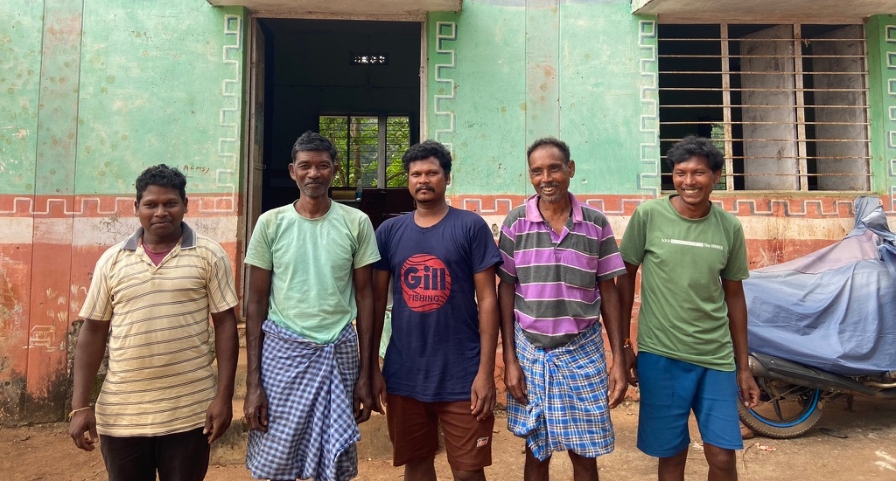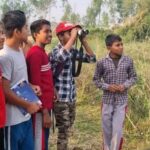Just over a year ago in Pubbadaguda, a nondescript village in Seethampeta mandal in Andhra Pradesh, you could see only two crops: ragi and paddy. If you visit today, you can smell the change in the air. The whole village practices only natural farming.
Natural farming is a non-chemical system that promotes diverse crops, crop rotation, on-site biomass management, integrating crops, trees and livestock, and rejuvenation of natural nutrient recycling. Unlike organic farming, natural farming rejects anything that can be purchased outside the confines of a farm.
If we fall sick or need money for any medical issues, we don’t have to borrow from others anymore, says Durga Rao.
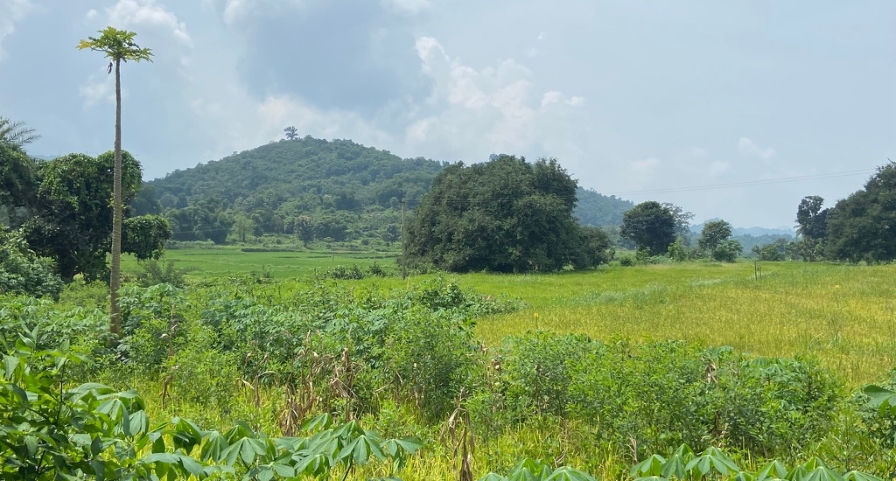
“The farmers here were used to spraying pesticides,” recalls Swetha Koduru, coordinator for the Jiva programme at Action in Rural Technology and Service (ARTS). “Initially, it was very challenging to convince them to opt for natural farming.”
Jiva is a programme by NABARD under its SuATI project, and is supported by Deutsche Gesellschaft für Internationale Zusammenarbeit (GIZ) GmbH. The programme is implemented locally in Seethampeta by ARTS.
So, what changed?
Also read: Chhattisgarh farmer’s transformative “ATM model” of crop-growing
Successful interventions
Much like all the villages in the region, Pubbadagudda has always grown ragi and paddy – two Kharif crops that need proper irrigation. Barring a few who possess borewells, most farmers in the region still depend on rainfall. In the period between Sankranti and the onset of monsoon, the land was left fallow.
Not anymore.
Under the Jiva programme, the farmers were introduced to the Pre-Monsoon Dry Sowing (PMDS) method, where a variety of crops are grown including pulses and vegetables in the same plot where paddy may have grown the previous season.
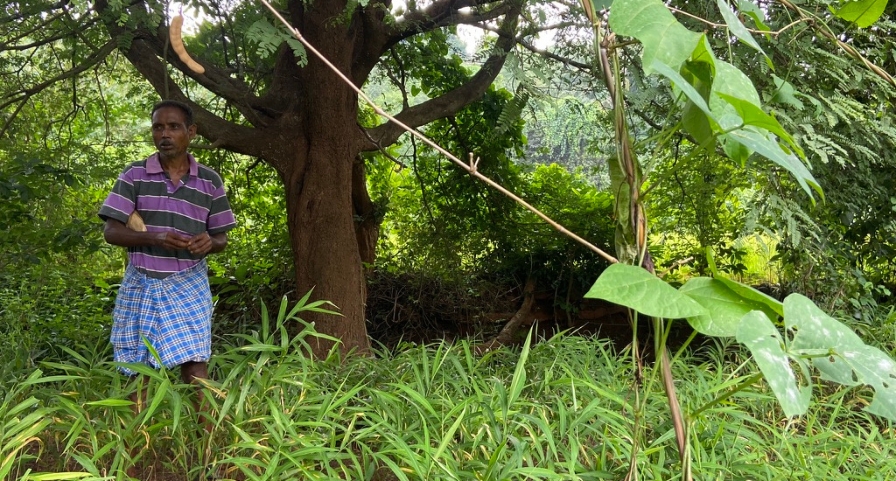
“The root system develops after 45 days,” explains Swetha. “We may harvest the crop, but leave the root system intact, so the soil is enriched,” she added. Come rainy season, the land is ready for Kharif crops.
With PMDS, the land is not left fallow in the off-season and the farmer too can earn some extra income.
Another productive intervention of natural farming is the intensification of paddy, through the line sowing method. Farmers are expected to plant the seedlings in a designated tagged area, ensuring each is equidistant from the next.
According to Swetha, this gives ample space and sunlight for the sapling to grow, resulting in superior quality and quantity, while controlling weed growth.
“At first, they feel it’s a waste of time turning something that takes an hour or two into a whole day’s affair,” says Swetha. But, once they see the benefits, they are keen to embrace it.
Polycropping is one more intervention that was introduced, where a farmer grows multiple crops in the same field. Unlike the Integrated Farming System (IFS) which focuses mainly on horticultural and commercial crops, polycropping or mixed cropping has space for food crops like ragi, jowar, maize, paddy and millets like foxtail.
One can witness this in farmer Tammayya’s field. A man of few words, who only speaks Soura, he is recognised as a model farmer in Pubbadaguda. He grows more than 25 varieties of crops in less than an acre. At first glance, a couple of tubers can be seen, besides a few varieties of millets. And under the shade of a huge tree grows okra, jowar, turmeric and ginger.
Also read: Why natural farming stops Maha villagers migrating
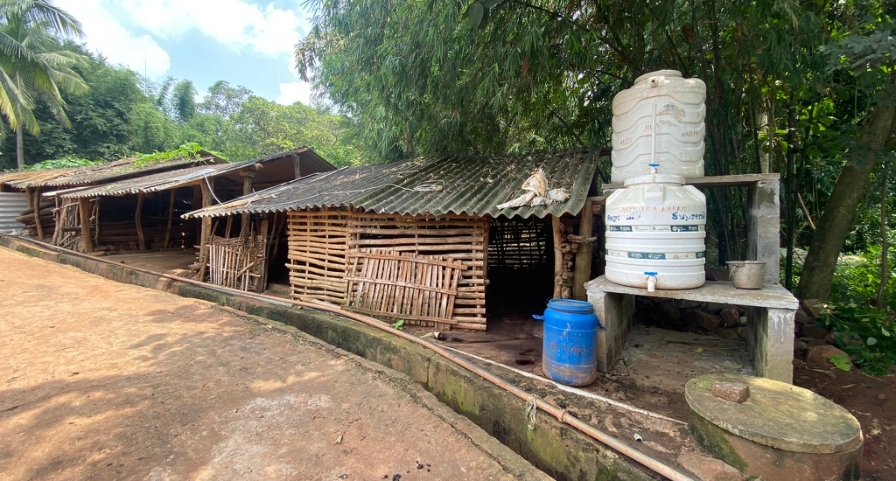
While he sells the turmeric and ginger in local markets, food crops like millets are for his own consumption.
“If one person sees the change, the rest will follow in no time,” Swetha remarks. “This is what happened in Pubbadaguda too. We did not have to do anything more.”
Yet, she accepts that it takes time for villagers to trust outsiders. Therefore, it helps that Simhachalam, an External Resource Coordinator (ERC) for the Jiva programme, lives in the same village. She belongs to the publicly-owned non-profit, Rythu Sadhikara Samstha, which encourages natural farming throughout Andhra Pradesh.
A sea of change
All 30 households in Pubbadaguda belong to the Soura community, a “Particularly Vulnerable Tribal Group” (PVTG) as per the Government of India. There are only 22 houses in the village, with many hosting two families.
The interventions, such as polycropping and intensification of crops, are already showing results. The village now has a water tank. A Bio Resource Centre (BRC) was recently inaugurated, which uses gravity to collect the urine and waste from cattle.
This will be used to prepare biofertilisers and biostimulants such as Ghana Jeevamrutham and Drava Jeevamrutham. These will also help maintain the moisture in the field during the dry season, giving farmers an opportunity to grow horticultural crops.
This has supported farmers with some extra income. Earning anywhere between Rs 75,000 to Rs 1 lakh annually, they can keep a significant amount of money aside for emergencies.
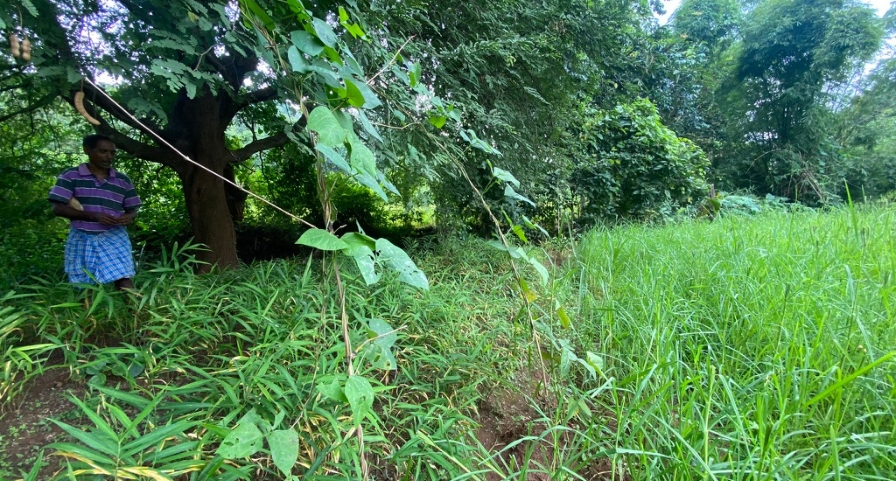
Economic prosperity has had an impact in other areas too. “Earlier, girls used to get married as soon as they finished 10th grade,” recalls Durga Rao, father of a 17-year-old girl. “Now, girls aged 20 and above are getting educated, not only going outside the district but even outside the state,” he said.
The pride in his voice is evident as his daughter studies at a polytechnic in Visakhapatnam, the nearest city. Another farmer Simahachalam’s daughter too studies with her in the same institute. He is also building a house in the village.
“If we fall sick or need money for any medical issues, we don’t have to borrow from others anymore,” says Durga Rao.
Also read: Reviving traditional red gram in drought-prone Dewas, MP
The lead image on top shows the farmers of Pubbadaguda, with Simhachalam in the left corner and Durga Rao in the middle. (Photo by Amulya B)
Amulya B is a multimedia journalist, writer and translator based in Bengaluru. Her stories explore the intersection of culture, society and technology. She is the winner of Toto Funds the Arts for creative writing and Laadli Award. She is a Rural Media Fellow 2022 at Youth Hub, Village Square.

